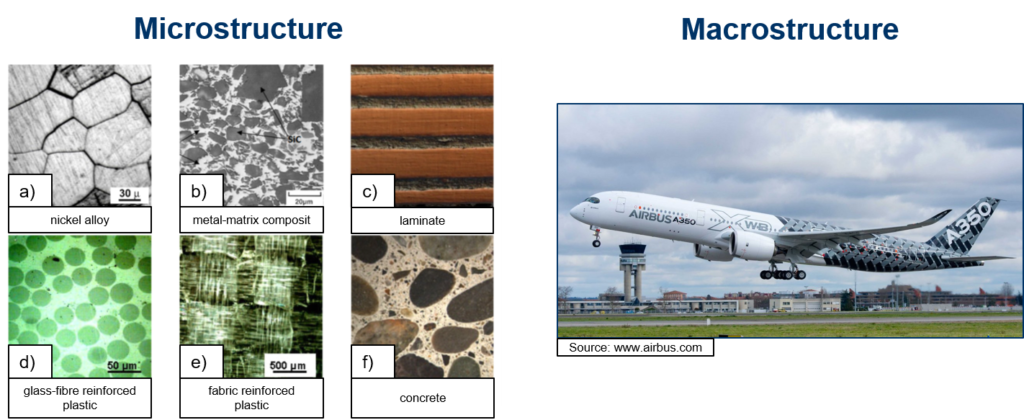Multi-Scale Modeling of High-Performance Materials

Multi-Scale Modeling of High-Performance Materials
1.) Atomistic-continuum multiscale modeling of novel high performance materials for extreme loading conditions;
2.) Development of new numerical algorithms in computational mechanics;
With the development in the field of supercomputing and several breakthroughs in multi-scale theory, the focus has shifted towards developing new materials that have extreme properties such as being ultra-lightweight while also having strong fiber-reinforced composites. These new materials require the development of new theories catering to large deformation, growth, fracture, and most significantly, the multi-scale effects. Faithful constitutive models for these new materials (ranging from ultra-soft to ultra-tough and incorporating structure at all length scales) require bridging structural and deformational phenomena at nano-, micro-, as well as macro-scales, which has increased the complexity of the governing equations tremendously.
One of the recent trends in designing lightweight high-performance materials for extreme loading conditions is about developing architectured materials that have an engineered architecture at the micro-scale. The various parameters of this architecture, such as its repeating length and constituent unit cell morphology, affect the mechanical properties (stiffness, toughness, ductility, etc.) at the macro-scale. The constituent unit cell is often comprised of nanorods that provide additional parameters for fine-tuning the macroscopic mechanical properties. For example, the length of the constituent nanorod, its diameter, and thickness are some of the parameters which govern whether the constituent nanorod would undergo Euler buckling, shell-type buckling, or just fracture. The transition from buckling to fracture at the micro-scale would lead to a transition from ductility to brittleness at the macroscopic level. Detailed analysis of these structures through multi-scale elastoplastic simulation will be carried out as well as concurrent atomistic-continuum simulation to better understand the mechanisms of failure and buckling at nano-, and micro-scales.
The governing equations which capture various multi-scale phenomena in heterogeneous materials have become highly non-linear and complex. Efficiently and accurately capturing the phenomena which occur at both, multiple time scale and length scale in complex heterogeneous materials, are the main challenge, since existing numerical tools would simply fail in such situations. The project aims to develop an efficient and stable time marching scheme to capture the multiple time scale events that occur in complex heterogeneous materials. Another challenge lies in the implementation of the concurrent atomistic-continuum methods to accurately capture fracture in heterogeneous materials. Here, the efficiency of the finite element discretization near the transition region and implementing the handshake region are two of the challenges, which the project tries to solve with more efficient finite elements and new shape functions.
It is expected that a comprehensive multi-scale theory and a numerical tool will be developed to computationally design novel high-performance materials displaying architectured non-classical mechanical properties. This will pave the way to provide important input parameters for further research that can then verify and develop such materials.
see also: Resources
